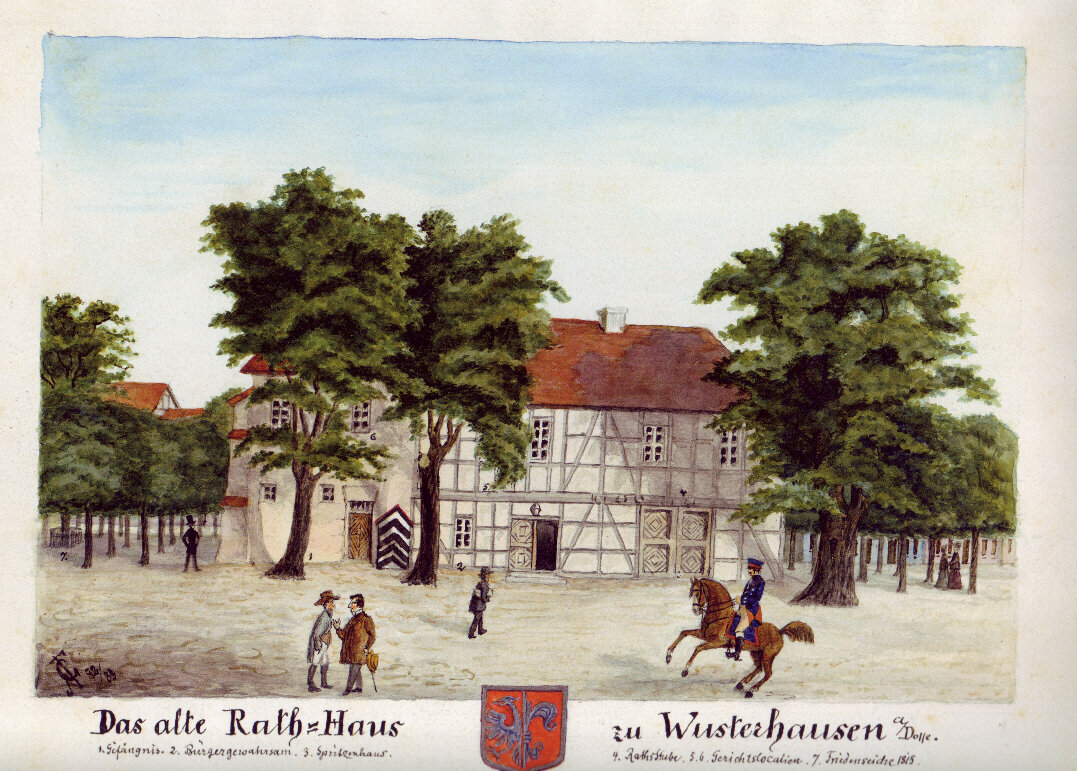City tour of Wusterhausen/Dosse – The town hall
The city of Wusterhausen received the upper and lower courts as early as 1325 and was therefore allowed to impose corporal and life sentences. Stendal law was used as a template for Wusterhausen, as was the case for Kyritz, Wittstock and Neuruppin.
The medieval town hall was affected by the city fires in the 17th century and burned down in 1758 along with the city archives. A court arbor or a pillory cannot therefore be documented.
lore
In addition to the fire reports, the oldest tradition about the town hall is the oldest depiction of the town (approx. 1720), which still shows the Gothic gables. Regarding the jurisdiction, handcuffs, a "jumper" and a "maiden" are listed in the performance of the town hall inventory of 1744. It is likely that these were objects that were used in punishments of shame.

Wusterhausen/Dosse: City Hall before 1854, Theophil Dombrowski, copy of a drawing by Karl Altrichter based on an old illustration
facts
After the judicial reform of 1849, the new town hall was built in 1854, this time with a prison extension, so that the district court could continue to have its seat in Wusterhausen. Public executions were no more and a practicing executioner was no longer needed.
